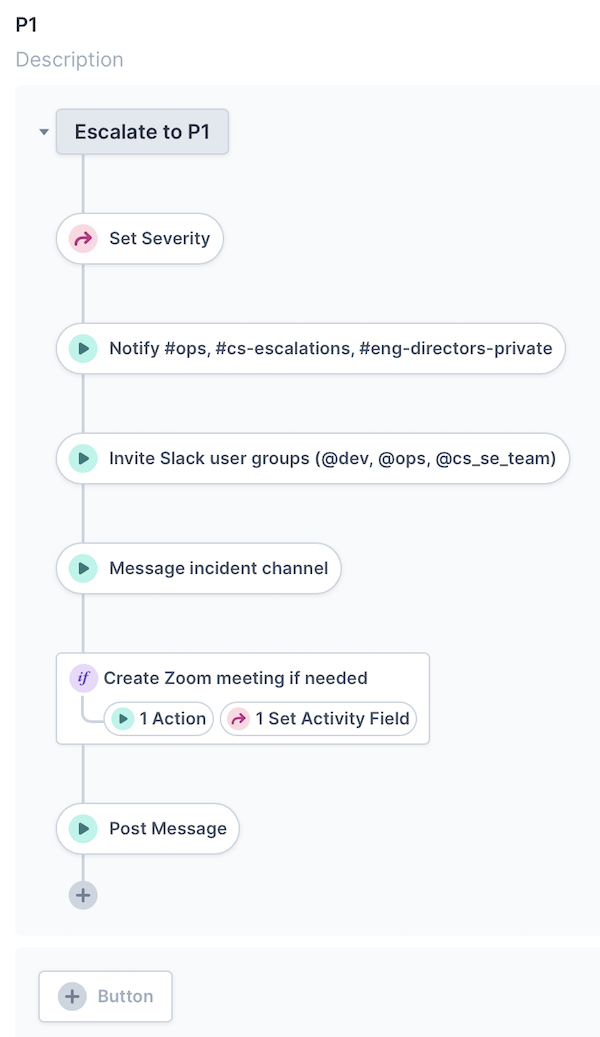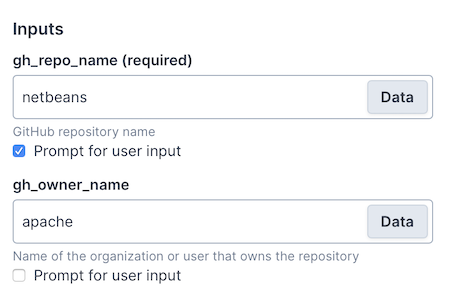Humans can be enabled to intervene in the automation loop in two ways.
- Provide Buttons. Define buttons for runbook users to click to kick off parts of the automations within the runbook body.
- Enable User Input. Specify for each action field whether the person who executes the runbook should be enabled to provide input when the runbook is run.
Provide Buttons
Click + Button in the runbook body and type a label that will appear on the button. Chain actions together for each button. You can add as many buttons as you need and further structure them within sections in the runbook, as shown below.
 When the runbook is run, the buttons you create will be shown so that the user can click them at the appropriate time to initiate the automation that you have made available via the buttons.
When the runbook is run, the buttons you create will be shown so that the user can click them at the appropriate time to initiate the automation that you have made available via the buttons.
Enable User Input
Check the Prompt for user input checkbox for each action field, depending on whether user input will be required when the runbook is run or whether you will define the data now while defining the runbook.
For example, below, in a GitHub-related action, the owner name is hardcoded to "apache", while the repo name is predefined to be "netbeans" with the option for the user running the runbook to override that value only.

When the runbook is run, each action field that has Prompt for user input enabled is shown to the runbook user in a dialog, with any content already provided as the default value, enabling the runbook user to intervene and influence the automation process.